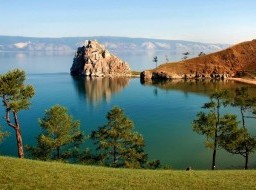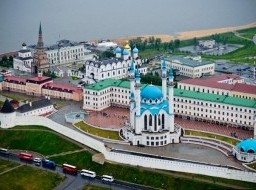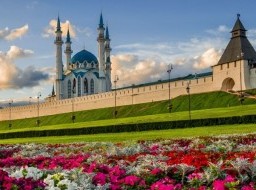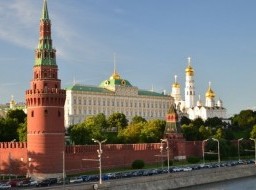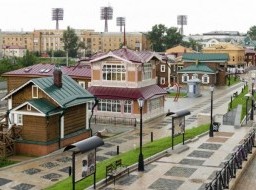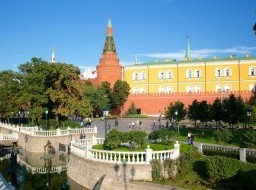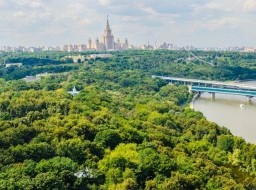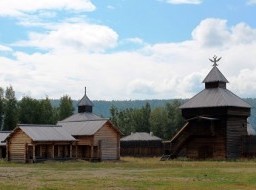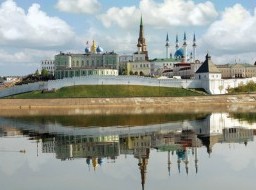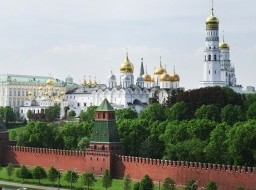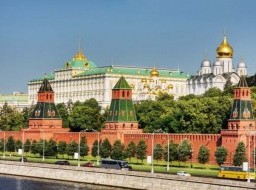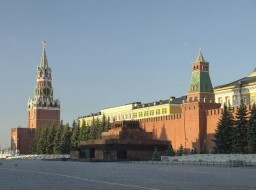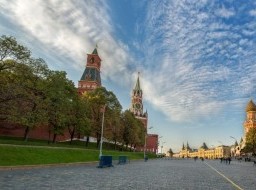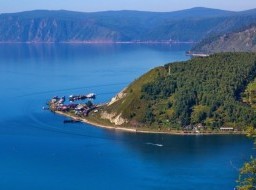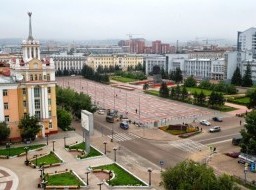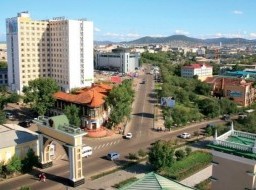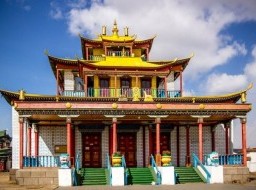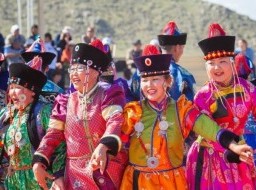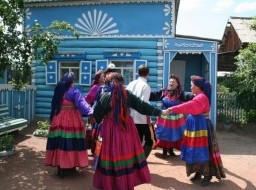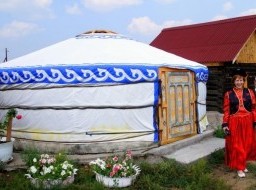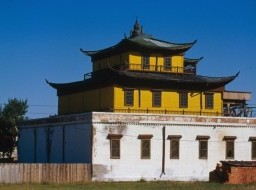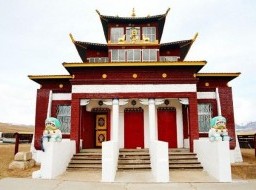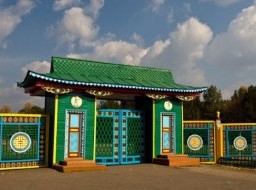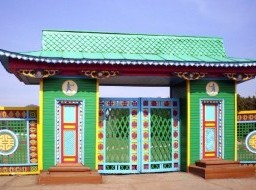Ulan Ude
Ulan-Ude is the amazing capital city of republic Buryatia in Russia, situated in the east of fabulous Siberia. The name means "red Uda" or "red gate" in Buryat reflecting the communist ideology of the Soviet Union to which it belonged. Closed to foreigners until 1991, Ulan Ude is surrounded by vast, wild nature, boundless steppes, alpine and taiga forests, the landscapes are truly breathtaking and offer a plethora of opportunity for fans of the outdoors to enjoy horseback riding, hiking, trekking, boating and fishing. Decorated with Buddhist temples and a sprinkling of shamanism, this incredibly unique city offers a diverse landscape of culture, cuisine, religion and custom to the lucky few who choose to visit Ulan Ude. Approximately 100 km south-east of Lake Baikal and nestled between the Selenga and Uda Rivers is where you’ll find Ulan Ude, an ethnic and spiritual melting pot of European-Russian, Buryat Buddhist and Mongolian cultures and an unquestionable hub between Russia and the East. You will get acquainted with the three century history of the city, its development from the small settlement to the renowned merchant city. The Trans-Siberian Railway reached the city in 1900 causing an explosion in growth. Now Ulan-Ude is an old historic and cultural center in Siberia. One must not visit Ulan Ude without pausing for a moment to consider its colourful history, which is what makes Ulan Ude so unique. Ulan-Ude is a city with the three-century history, particular culture and unique architecture that preserved the antiquity and absorbed the modern features. Ulan-Ude was based in the 17th century by the Russian path-breakers. The year of its foundation is considered 1666, when the Russian Cossack detachment construct a little hut on the rocky bank in the mouth of the river Uda, and called it the Udinsky winter hut. Mainly, it was built for the purpose of yasack (tax type of Siberia that, mainly, was paid with furs) imposing on the local inhabitants. The place for it was chosen luckily. The winter hut was situated at the crossroads between Russia, China and Mongolia. The woody mountains and water ways served as a good protection from all the parts around. Due to the geographically and strategically beneficial location of the winter hut, the Moscow government decided to build a big ostrog there. The winter hut was fenced with a paling in 1860. The construction was ended in 1689. Later the Udinsky ostrog had got a rank of city. Its official name of the – Verkhneudinsk had been approved in the 30s of the 18th century. While developing of Transbaikalia: construction of the land Siberian highway, the Russian-Chinese trade relations as well as a complete disappearance of the war threat, made the transport, commerce and administrative functions of the city become first and foremost. In 1775 the Tsar’s Senate invested Verkhneudinsk with own emblem. There depicted a babr (tiger) with a sable in his mouth (like on Irkutsk’s emblem) on the gold field at the upper part of the emblem, while at the lower part – a rod of the god Mercury (god of commerce) along with a horn of plenty that emphasized the commerce importance of the city. In 1994 the emblem had been changed for Ulan-Ude separated from the Irkutsk Oblast and formed its own one. The current emblem has no babr, the lower part is the same, but the sun and the moon appeared at the upper part symbolizing the eternal life and hearth. The first stone buildings were built in the city center in 19th century. They were constructed in style of the Classic architecture. By the end of the 19th century Verkhneudinsk acquired an aspect of the European Russia’s district city. Its streets were straight and right-laid. There were constructed a square with stone buildings and trade rows. Moreover, its lucrative location: near the navigable river Selenga, on the main road from Irkutsk towards Amur and close location of the bread and well-do regions converted Verkhneudinsk into the main commerce center of the western part of the Transbaikalia. The intensive industrial development of the city connected with the construction of the Great Trans-Siberian railroad. The laying of the Verkhneudinsk’s part of the road was terminated in 1899. On August 15, 1899 the city’s residents saw a first train. It was a great and joyful event in the life of Verkhneudinsk. In 1934 Verkhneudinsk was renamed in Ulan-Ude. Nowadays, there are about 400 thousand residents in the city. It places Ulan-Ude on the third position among the rest Eastern Siberian cities. The most visiting by the tourists object in Ulan-Ude is an Ethnographical open-air museum of the tribes of Transbaikalia. It is situated in the suburbs of the city in Verkhnaya Berezovka village. The unique exhibits that tell us in details about the Buryat tribes’ culture and their way of life are kept in the museum’s funds. There one can see tiled tombs belonged to the Bronze Age, the wooden architectural monuments dated from the beginning of the 20 century. The museum started its work in 1973, and now it is considered to be one of the unique open-air museum-preserve of 23 hectares. About 100 thousand visitors go through the museum’s doors annually. Its exposition is presented in such a way that every ethnic group that inhabits the Baikal region, is shown apart from all others. Firstly, there is an archaeological complex, then the Evenks’ one, the Buryats’ and so on. One more museum is a Historical one. It represents diversity of the Orthodox and Buddhist relics. One of the Ulan-Ude’s famous sights is a monument of V.I. Lenin. It is placed on the main city square named Square of Sovety. The 12-tone monument in form of the leader’s head was erected in 1970 in honour of Lenin’s 100-year birthday anniversary. This very monument was acknowledged as the best one on the world exposition in Montreal in 1967. From 1990 Ulan-Ude is regarded as one of the historic cities of Russia due to its territory possesses over 200 historical, cultural and architectural monuments. There is an Ivolginsky datsan at a distance of 40 km from Ulan-Ude that was built in 1947. In the main temple of the datsan is kept an imperishable body of Pandido Khambo-lama Itygilov – the authentic Buddhist monk that reached a lucid state – Nirvana, that provides freedom from own conscious of “I am” and burden of the world. Lama died in 1927, and some years ago, his body was taken out his grave by the Buddhists of Buryatia. During the examination of his body even the scientists that are the materialists didn’t find any indications of death. The logical explanations to that had not been given up to now. The only way left is to regard it as a miracle. The monks of the local datsan believe that Pandido Khambo didn’t die, he just continues meditating. |

